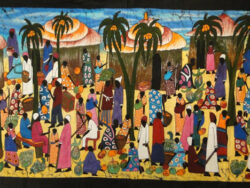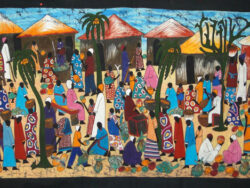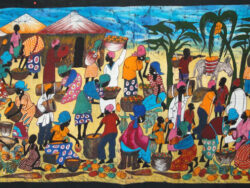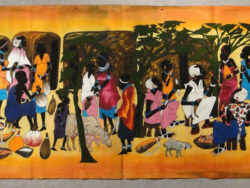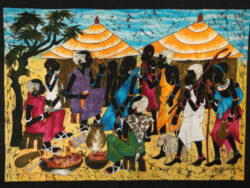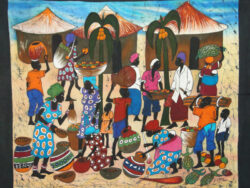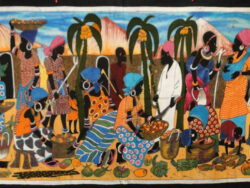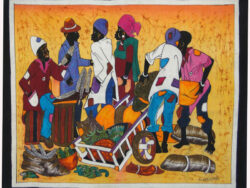About Richard Kimbo, a native Kenyan and master artist of Batiks. We met Richard many years earlier and fell in love with his original batiks. Richard depicts the traditional market places and village life of his homeland and the greater Nairobi area. We’ve been carrying his ‘batiks’ since 2012.
What is a batik? The art form itself involves mixing wax and water to make a fabric area, often cotton cloth, layered with wax. The form is not new, having been employed more than 2,000 years ago. Batik style of painting thrived in Indonesia around these times, but was also found to be practiced in Japan, China, India, Egypt, and Persia. Beyond artwork, batik clothing material has also been discovered, mostly among the aristocracy.
Where does the word “Batik” come from? Its origin comes from Indonesia, but it can also be found in Japanese as “Ambatk” translated to mean “writing” and “drawing.” The Indonesian origin means “a drop” and refers to drops of wax.
Kimbo started selling his batiks in 1969 after learning the skill from Elimo Njau, a teacher at the then Sadler House, now known as the Paa ya Paa Gallery in Kenya.
Since that time Kimbo has sold over 4,000 artworks. How did Kimbo decide to sell Batiks? He says, “A problem made me become a painter. I needed an occupation and this is what I chose. My grandfather also did art focusing on the Kikuyu culture.”
All of Kimbo’s batiks are one of a kind, hand made. None of them are the same.
Kimbo’s batiks include a master’s work of deep colors, rich detail and a dramatic style. It is not the common commercial batiks one may see. Indeed, Kimbo’s batiks are, like his years in practice, well beyond those of other batik artists.
African
African
African
African
African
African

